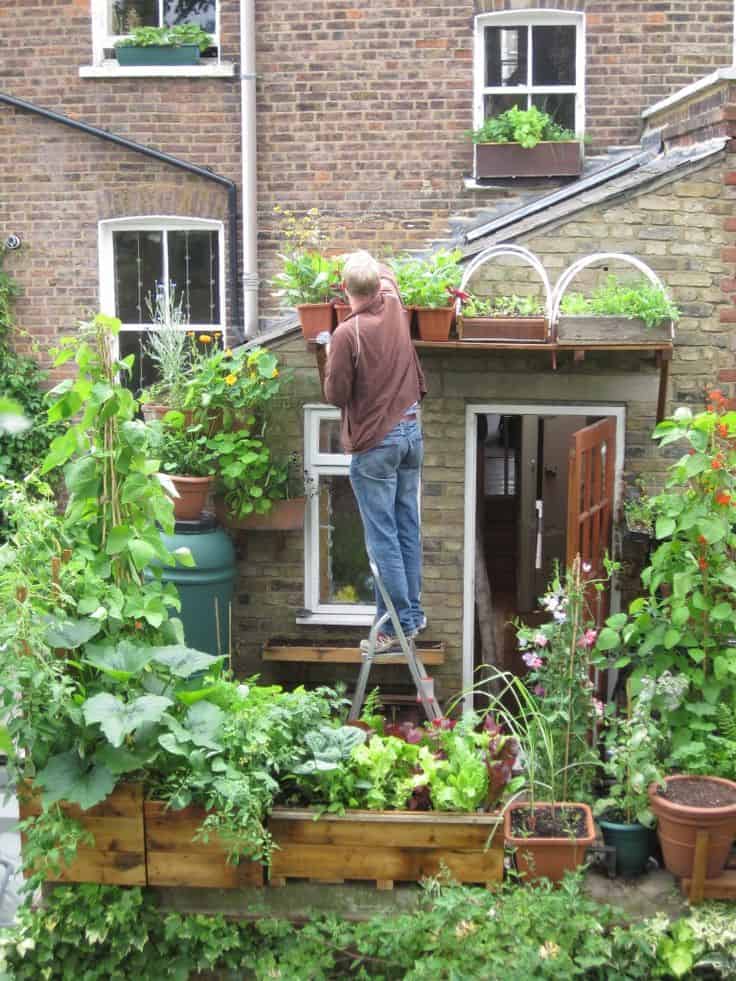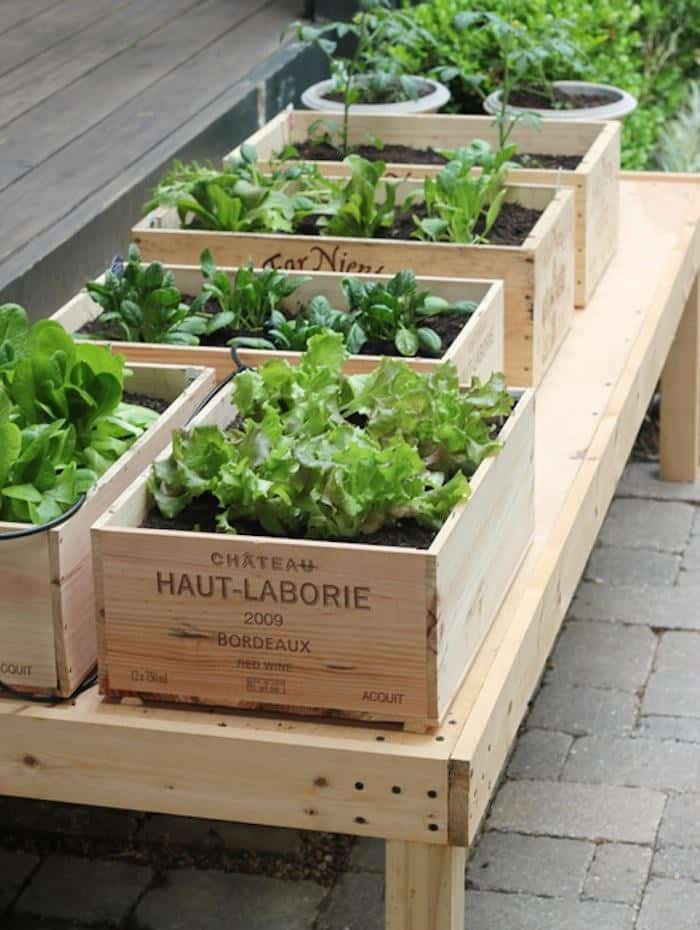
The soil in which your garden is planted is one of the most important factors contributing to the quality of your harvest. it may seem like you’re stuck with the soil you have, the truth is there are quite a few gardening maintenances and gardening services you can do to improve the quality of your soil and maximize your harvest.
So here are 19 garden soil hacks you can use to grow a healthy garden.
1. Control the Weeds
There are a number of reasons why weeds are such a problem for gardeners, including the fact that they pull all of the nutrients out of the soil. If you want to create an ideal growing habitat for your plants, getting the weeds in your garden under control needs to be a top priority.
Start by putting mulch over your garden in the fall in order to get a head start on weed control and prevent many weeds from sprouting. From there, try to stay on top of the weeds by pulling up those that do sprout in the spring as quickly as possible.
You can bury the weeds you pull under a few inches of mulch to kill two birds with one stone and add more nutrients to the soil at the same time you are eliminating your plants’ competition.
2. Add Nutrients With Earthworms
Earthworms can be incredibly beneficial to the quality of the soil in your garden. There are a few different ways to make use of earthworms in order to add nutrients to your soil.
One method is to add earthworms to your compost pile. The worms will help speed up the decomposition of your compost as well as infuse it with even more nutrients.
You can also farm earthworms in a separate compost bin and collect the castings that they leave behind. add the castings to your garden soil to boost its available nutrients.
Lastly, you can place earthworms directly in your garden by burying them in the soil and placing a little compost and/or mulch on top of them. The worms will deposit nutrient-rich castings into your garden soil directly.
3. Manure
Animal manure is one of the oldest fertilizers in the world. Even with the invention of artificial fertilizers, though, old-fashioned manure remains one of the most effective ways to add a wide range of nutrients to the soil.
Chicken manure is one most popular manures for fertilizing gardens, thanks mostly to the fact that it is easier to collect in large amounts. However, you can also use horse manure, cow manure, goat manure, or manure from most any other livestock animal.
One important word of caution when using manure to fertilize a garden, though, is that using too much manure or using manure that is too fresh can “burn” your plants. Therefore, it’s important to use the right amount of manure in your garden as well as let your manure age and dry out some before you apply it.
4. Start Composting
Compost is a gardener’s best friend. Starting your own compost pile presents a relatively inexpensive and hassle-free opportunity to dramatically improve the quality of your garden’s soil.
Starting out composting may be a little intimidating. However, composting isn’t all that complicated or difficult once you have a good grasp of the process.
5. Plant Cover Crops
Cover crops are plants that are planted for the purpose of enriching the soil. When planted in your garden alongside the plants that you intend to harvest, cover crops can add nutrients to the soil, smother out many weeds and other unwanted plants, improve the drainage in your, and more.
There are a number of plants that serve as cover crops – some of which you can actually harvest as well. Daikon radishes and ryegrass are two common cover crops
6. Use Mulch
Mulch doesn’t directly add nutrients to the soil the way fertilizer does, but it can still improve the quality of the soil around your plants in a significant way.
You’ll want to add a few inches of mulch around the base of your plants right after you plant them. This mulch will help retain moisture and ensure that your plants get plenty of water. The mulch will also help cool down the soil your plant is growing in, which will improve the quality of the soil and the health of the plant that is growing in it.
7. Don’t Walk On Your Garden Soil
Everyone knows not to step directly on the plants in a garden, but did you know that even stepping on the soil around your plants can be harmful as well? The reason why you want to avoid stepping on your soil has to do with keeping the soil aerated.
The soil in your garden contains small pockets of air, and this air plays an essential role in the quality of your soil. When you step on the soil, though, you force out this air.
When you plant your garden, create ample room between the rows for you to walk down without stepping on the soil that your plants’ roots are in. This way you can still access your plants without robbing the air from the soil beneath them.
8. Don’t Work on your Soil When It Is Wet
Working your soil when it is too wet creates the same problem that stepping on your soil does. it forces the air out of the soil.
While it may be tempting to head out to your garden as soon as a rainstorm is through, you’ll want to wait until your soil dries out a little before you try to do anything with it.
test if the soil is too wet to work, by grabbing a handful of the soil and squeeze it.
If no water comes out between your fingers, then the soil is ready to work. If you do notice water coming out of the soil, though, it’s better to wait for it to dry out a little before you try to do anything with it.
9. Put Kitchen Scraps To Work
Many of the kitchen scraps that you might be throwing out can be very healthy for the soil in your garden. raw vegetable scraps, coffee grounds, banana peels, eggshells, and many more kitchen scraps can all be a great source of nutrients.
Rather than throwing these kitchen scraps away, collect them and spread them around your plants. It may not make for the most attractive garden in the world, but it will greatly improve the quality of your soil and the health of your plants as the scraps decompose.
10. placing Plastic Forks in a Garden
stop animals getting to your garden by placing plastic forks in the soil strategically
11. Use a Milk Jug to Protect Seedlings
Protect young seedlings by creating a greenhouse using the top of a milk jug
12. Table cloth for pulling heavy items over grass
start using table cloth to move heavy items on your gardens, such as bags of soil or wood chips, etc.
13. Coffee Filters in the Bottom of a Garden Planter or Pot.
prevent soil from falling through the drainage hole by Linning flower planters or pots with coffee filters.
14. Watermelon Slings
you can easily Support a growing watermelon by making slings for the growing watermelon out of unwanted t-shirts
15. Milk Jug Watering Can
Poke the cap of a milk jug holes to make it a watering can. Such a great idea, I use it all the time!
16. Stones Painted as Strawberries
Well, this is a great idea! It sure looks like it is fun to try! Saving this
17. How to Make a Raised Garden Bed
This raised bed garden idea provides you with enough space to water all of the plants. So smart and productive!
18. Golf Ball Ladybugs
Use old golf balls as ladybug decorations in the garden. Adorable! All you need is some paint.
19. How to Grow Hanging Strawberries
Strawberries are tricky to grow. Try this hack! Grow strawberry baskets – saving this!
SOURCE:

